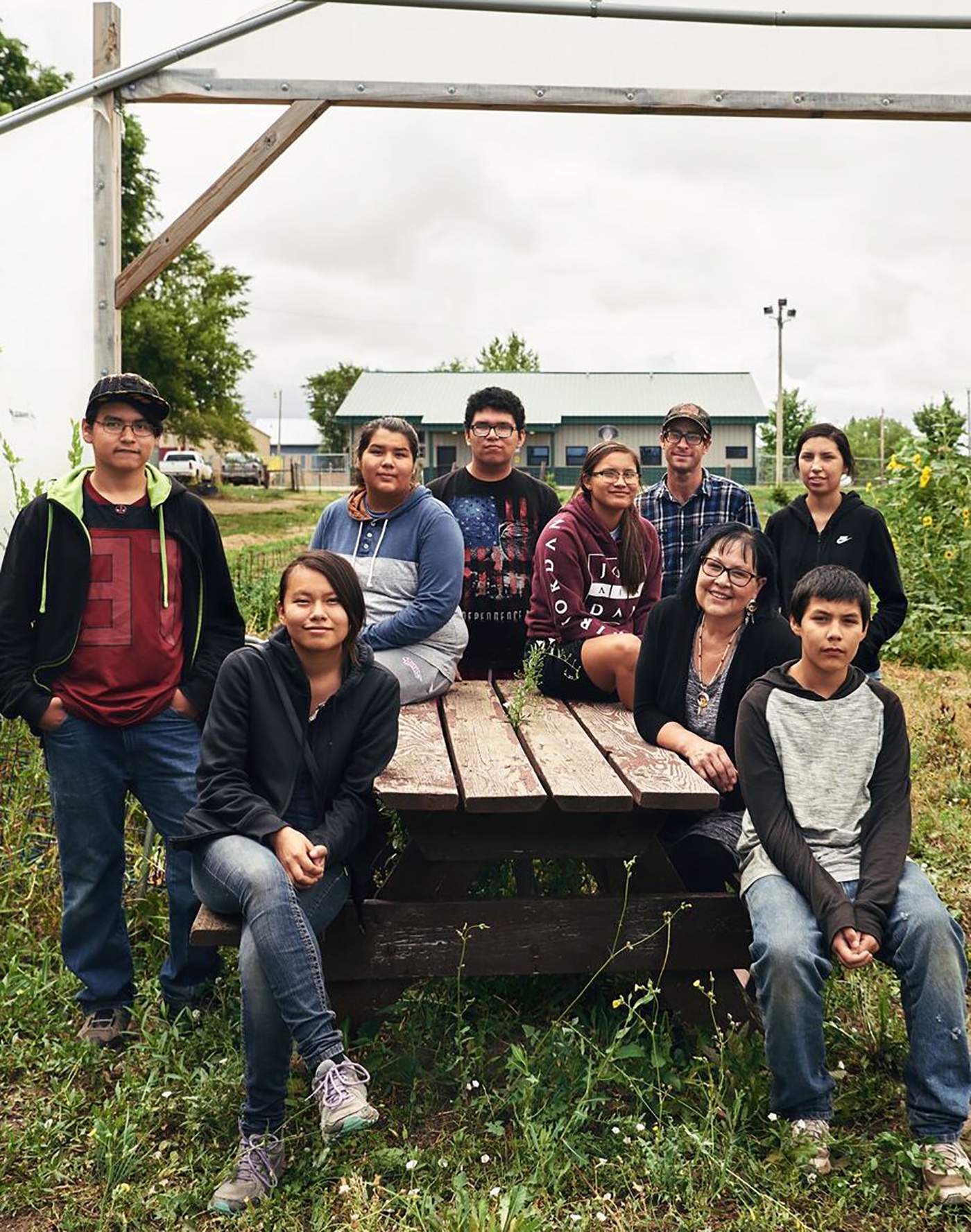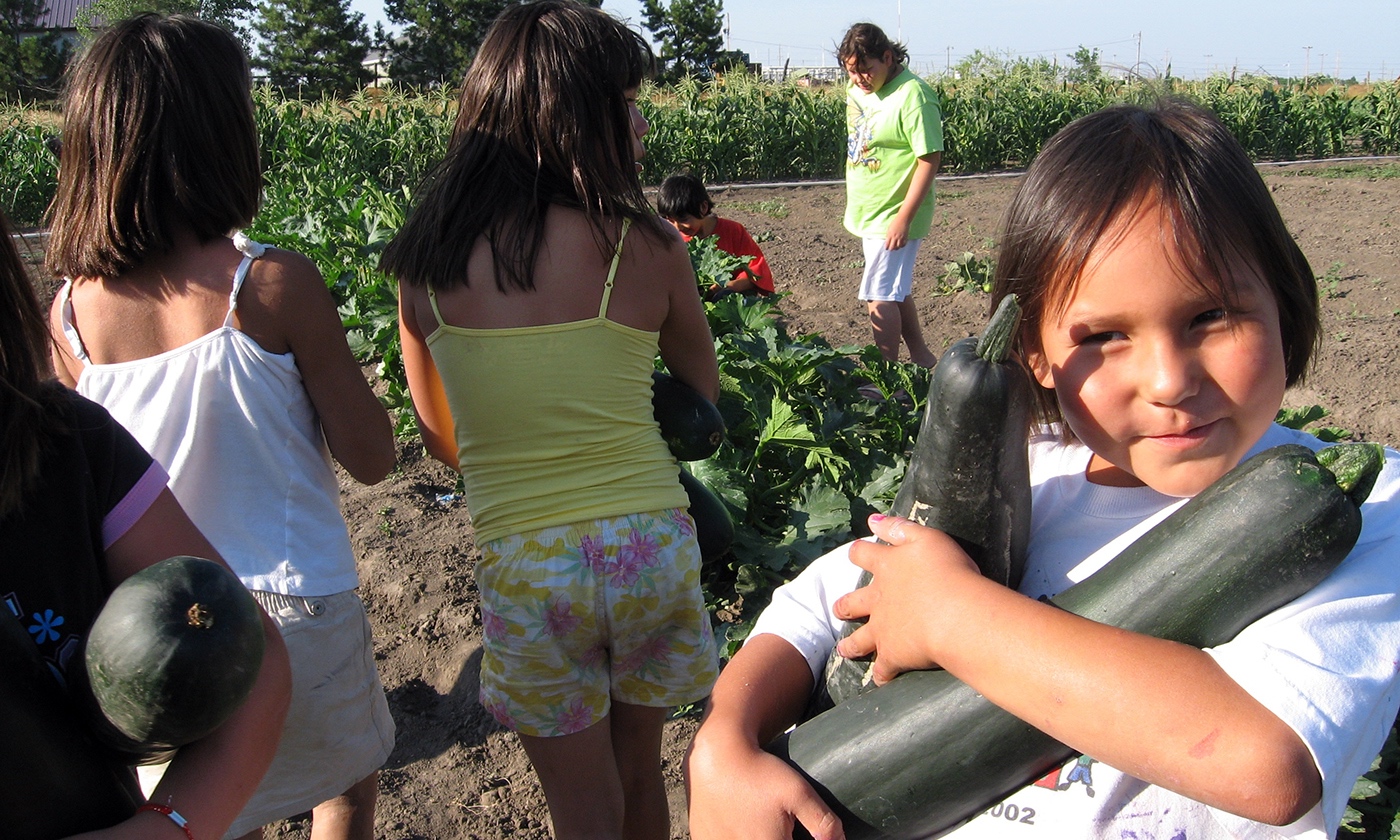“Gardens represent resiliency, strength, wellness, culture.”
YES! Magazine
Many Americans are now experiencing an erratic food supply for the first time. Among COVID-19’s disruptions are bare supermarket shelves and items available yesterday but nowhere to be found today. As you seek ways to replace them, you can look to
Native gardens
for ideas and inspiration.
“Working in a garden develops your relationship to the land,” says Aubrey Skye,
a Hunkpapa Lakota gardener. “Our ancestors understood that. Look at the old pictures. It’s etched on their faces. When you understand it as well, a sense of scarcity and insecurity transforms into a feeling of abundance and control—something we all need these days.” For several years, Skye ran a
CDC-sponsored gardening program
on Standing Rock, a reservation that straddles North and South Dakota. He created hundreds of productive plots, large and small, for fellow tribal members.
Tribes’ food-scarcity problems developed after signing treaties with the United States in the 18th and 19th centuries. Under these agreements, tribes typically transferred land to the federal government in return for education, health care, and other services. The diminished tribal homelands that resulted, along with continual federal efforts to decrease Native land holdings, severely restricted the hunting, fishing, and other activities with which tribes had fed their people since time immemorial. To force tribes onto reservations, Skye adds, the United States purposely destroyed critical food sources, such as the huge buffalo herds that once roamed the Plains.

Growing Strength
Incessant disasters have created economic and social burdens, including hunger, that fall heavily on children. “These tragedies are so hard on kids,” says the Cheyenne River Youth Project’s director Julie Garreau. The project is on the Cheyenne River Sioux Reservation, in South Dakota, just south of Standing Rock. “Don’t ever let people tell you children don’t know what’s going on,” she says. “The pandemic is creating enormous additional stress, beyond what they were already struggling with.”
Her program works to make up the difference. With its 2.5-acre garden, café, gym, and library, the organization has long provided children with good food and a safe place to learn and have fun. Now that tribal children are sheltering at home, the youth project’s garden and the sack meals her organization delivers ensure that, at the very least, they have healthy food each day, says Garreau, who is a tribal member.
“I’m so grateful,” she says. “We’re a nonprofit, and our funders contacted us—we didn’t go to them—and gave us support for meals with a hot entrée, juice, and a healthy snack like fruit or nuts. We started driving around in our pickup with food for 35 kids, then 50, then 75.” The youth project is working to get the word out. “We hope to reach 250 kids,” Garreau says.


1.
Plot Your Success
Experienced gardeners may be comfortable planting big fields of their favorite crops. Skye has a nearly 1-acre plot just downhill of his Standing Rock home. But if this is your gardening debut—as it was for some tribal members he provided with gardens through the CDC project—ensure success by starting small. Try a few pots or raised beds, or perhaps a small in-ground plot, with easy-to-grow plants, he says. Good options might be tomatoes, peppers, green beans, radishes, summer and winter squash, onions, or leafy greens. “Don’t bite off more than you can chew!” Skye quips.
2.
Cultivate Plant Friendships
Many American gardeners know about the Three Sisters—in the celebrated trio, cornstalks serve as trellises for beans, which in turn fix nitrogen (fertilizer), while big, flat squash leaves conserve soil moisture and keep down weeds. Such plant groupings, also called
companion plants, are expressions of cooperation and sharing, says the Mohawk director of the Traditional Native American Farmers Association, Clayton Brascoupé. “Your garden should be like a healthy forest, which has trees of various sizes,” he says. “Look at nature, and figure out combinations that mimic it.”
In his gardens at Tesuque Pueblo, north of Santa Fe, you can see peas twining up corn plants and basil rising above the broad, flat leaves of watermelon. “Experiment!” he says. “Plants can surprise you. One year, we discovered that garbanzos and corn really enjoy each other.”
3.
Make Room for Hard-working Beauties
Embellish your garden with colorful flowers, particularly
those native to your area. “They attract bees, butterflies, hummingbirds, and other pollinators,” says Skye, adding that pollinators are an integral part of a plant’s life cycle. “Without them, the harvest wouldn’t happen, and we would be looking at extreme food shortages, not just occasional gaps. By giving pollinators flowers they like, we support them, just as they support us.”
4.
Keep Crops Cozy
Got a plant that’s struggling? Give it a rock! Brascoupé explains that in Southwest Native gardens, rocks are commonly set next to seedlings or plants that need help. They act as heat sinks, smoothing out day-night temperature variations as they soak up the sun’s heat and release it in evening’s chill. The practice may have been more widespread, he says, appearing as far north as Iroquois gardens in the U.S. Northeast. It makes sense, he says; in a cold region, rocks protect seedlings from unexpected early-season frost.
5.
Source Materials Locally and For Free
For no-cost drip irrigation, Brascoupé uses a fine needle to poke a hole in the neck of clean soda-pop bottles or milk jugs. He then fills the containers with water, replaces their caps, and pushes their pierced necks into the soil.
Conserve soil moisture and keep weeds down by surrounding the plants with mulching materials that would otherwise have been discarded. People spend time and money getting rid of cardboard, shredded office paper, lawn clippings, and leaves, Brascoupé says. “Tell neighbors, ‘I can take that off your hands.’ Build human relationships.”
6.
Embrace Dandelions
Don’t banish dandelions. Welcome these supposed weeds! Their leaves are delicious and nutritious, and their taproots break up hardened soil, I learned from Native gardeners. My New York City backyard used to be so compacted, little grew there. I tried scattering dandelion seeds around the yard. They grew and blossomed, and soon earthworms moved in. The soil became soft, friable, and plant-friendly. Earthworms are at it 24-7, working on your behalf, according to Skye. “What more could you ask for?” he says.
7.
Include Healing Herbs
Skye has a small medicine-wheel garden by his home, where he delights in growing echinacea, chamomile, comfrey, and other medicinals from seed he saves from one year to the next. Such circular plots are traditionally places to grow herbs, thereby experience their delectable flavors and the
natural healing they promote.
8.
Save your Seeds
At the end of the season,
save the seeds
of plants that thrived—and that you enjoyed—in your garden. You can help ensure your future food supply and, if you include unusual or heritage varieties, do your part to sustain biodiversity.
Seed-saving preserves history as well, Skye says. He called seeds time capsules. “We Native people have always saved them. As we plant, and save, and replant, the seeds go through all we are going through, the good times and the bad.” The Dream of Wild Health seed collection, for example, includes a Cherokee family’s gift of corn that survived the tribe’s deadly Trail of Tears, a forced march that displaced their ancestors from their original homelands.
Today, danger confronts all of us on this Earth. “We were already facing climate change, and now there is the pandemic,” Skye says. The seeds will always be there, to provide both food and a spiritual connection to the Earth, he says. “They are how we will survive.”
Garreau echoes this sentiment: “When we come out of this terrible pandemic, we will have learned to be stronger. We will be invincible.”
Stephanie Woodard is an award-winning journalist who writes on human rights and culture with a focus on Native American issues. She is the author of American Apartheid: The Native American Struggle for Self-Determination and Inclusion.
Note: This article originally appeared on YES! Magazine. It is published under a Creative Commons license.
Join the Conversation

